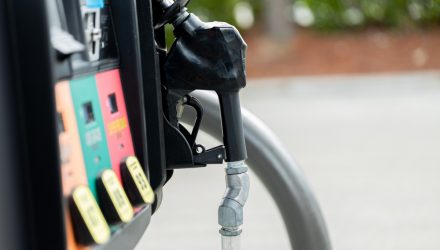I love to drive my truck and my motorcycle. I even like being a passenger while someone else drives. If the plan includes a road trip big or small, I’m in. When I lived in Maryland, I loved to take day trips to Ocean City or Philadelphia. Now that I live in Florida, a much bigger state, I am routinely traversing counties more often than the typical driver.
Gas prices are high. Whether you drive more or less than I do, gasoline costs are taking a bigger bite out of your budget. Prior to 2021, the annual national average price for a gallon of gas exceeded $3 just five times. It didn’t hit $2 until 2005!
Regular gas is around $3.64 here in South FL. I’m always looking for a deal to keep the cost under $3.50 per gallon. Since I’m not ready to change my driving habits, I ran the numbers to see how much my oil company dividends would offset some of my gas expenses.
My Favorite Way to Invest in Oil
Oil exposure is essential to any investing portfolio. Depending on your investing strategy and risk level, there are many ways to do that. For example, you could gamble on the price of crude oil in the futures market. You could also own stock in oil producers or refiners. Or you could buy a fund that owns a basket of energy stocks, or buy options on energy companies.
It’s no secret that my favorite way to hold oil exposure is with pipeline companies structured as MLPs (master limited partnerships). No matter what’s happening with the price of crude oil, it has to be transported through pipelines. And these pipeline companies are being paid through fixed-price contracts to make sure that oil continues to move.
Plus, when a company is structured as an MLP, it is required to pass through almost all of its income to shareholders. The result is above-average yields for income investors like us.
My favorite MLP for over a decade has been Enterprise Products Partners (EPD). The company reported net income of $1.5 billion for the first quarter of 2024, up 5% year over year. Plus, the current dividend yield is 7.2%.
How to Get Revenge at the Gas Pump
Let’s say you have a typical-size vehicle with a 15-gallon gas tank. At today’s national average of $3.64, you’re looking at a bill of $54.60 to fill the tank. Let’s put that in terms of EPD dividends.
EPD pays a $2.06 dividend per share annually. That pencils to just 27 shares of EPD would buy you a tank of gas every year. That’s an investment of $775 at its current share price. Sure, one tank of gas per year doesn’t sound like much. But if your long-term goal is to have your dividends pay your bills, you have to start somewhere.
If you don’t have $775 to get started, start smaller. Buy one share every other week. In just one year, you’ll have enough shares to get your “bonus” tank of gas the following year. If you stick with this program you’ll continue to add free tanks of gas year after year.
A $5,000 investment in EPD would get you 6.5 tanks of gas, or one every other month. A $10,000 investment in EPD would equate to 13 fill-ups per year, or more than one every month.
Even better, EPD has raised its distributions every year for the past 25 years. Each year, you’ll be able to put just a little more gas in your tank or keep up with prices if we continue to see them rise.
I continue to buy more EPD shares whenever I put more money in my brokerage account. If you’re goal is to eventually pay all your bills with dividends, this is a great way to get some gas pump revenge.
One wrinkle in this plan is that you’ll receive a Form K-1 for tax reporting. You should consult with your tax professional to understand the tax implications of owning EPD.
Personally, I find this document is easy enough to report. However, EPD sends this form later than my other tax documents which delays my ability to file until March. For me, the extra income and consistent payouts from EPD outweigh this minor inconvenience.
For more income, now and in the future,

Kelly Green
Originally published 15 May, 2024
For more news, information, and analysis, visit VettaFi | ETF Trends.
